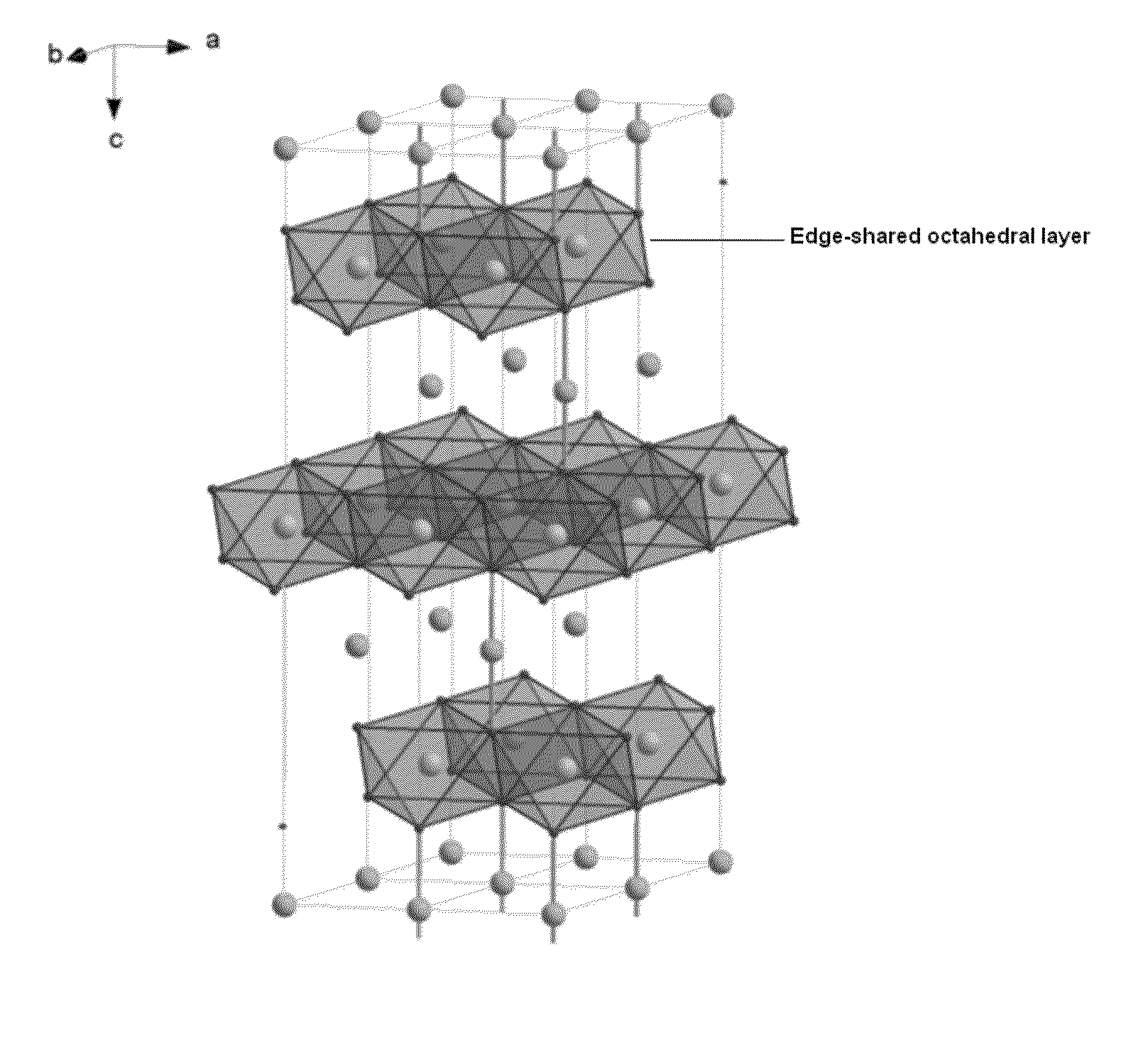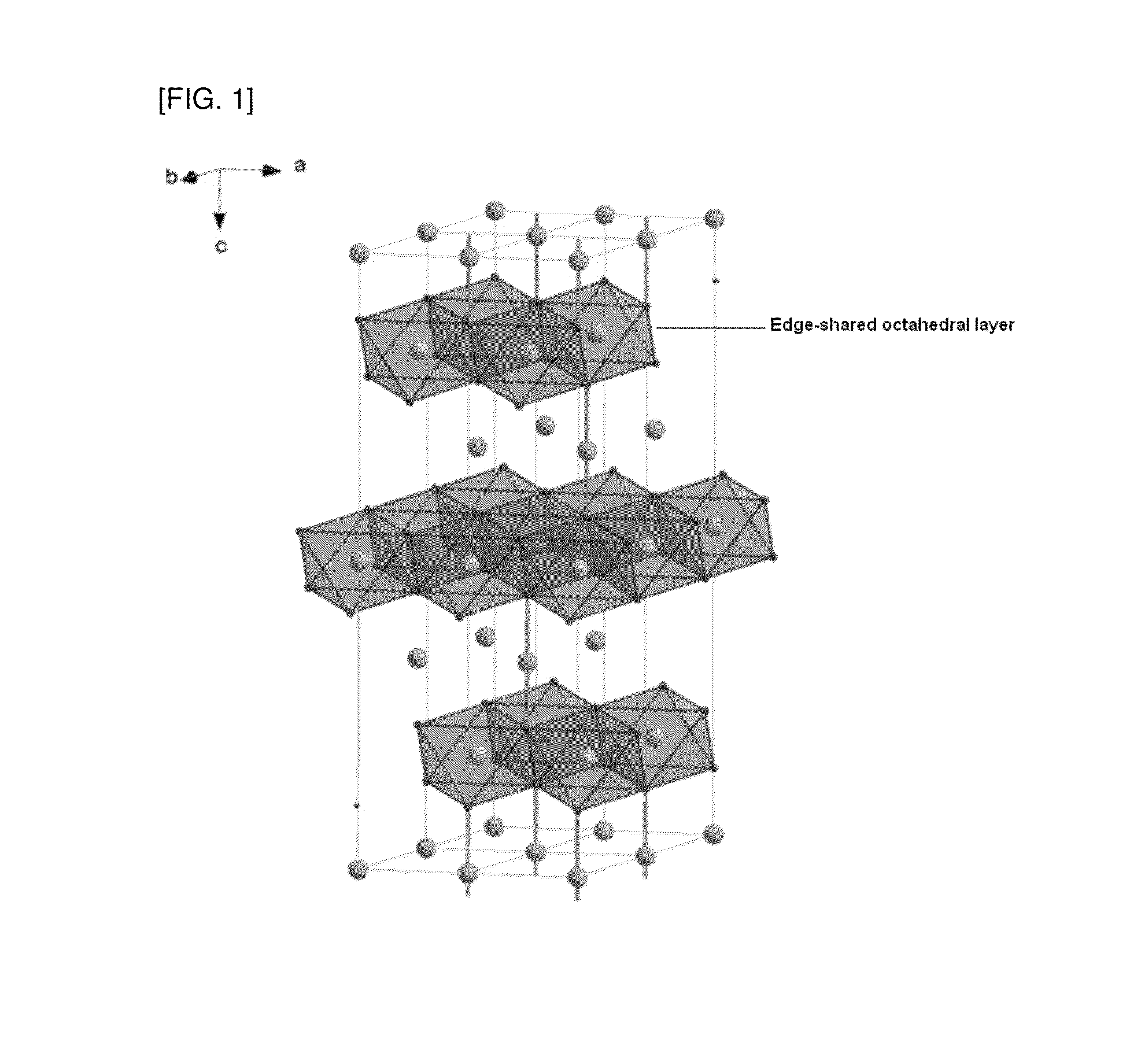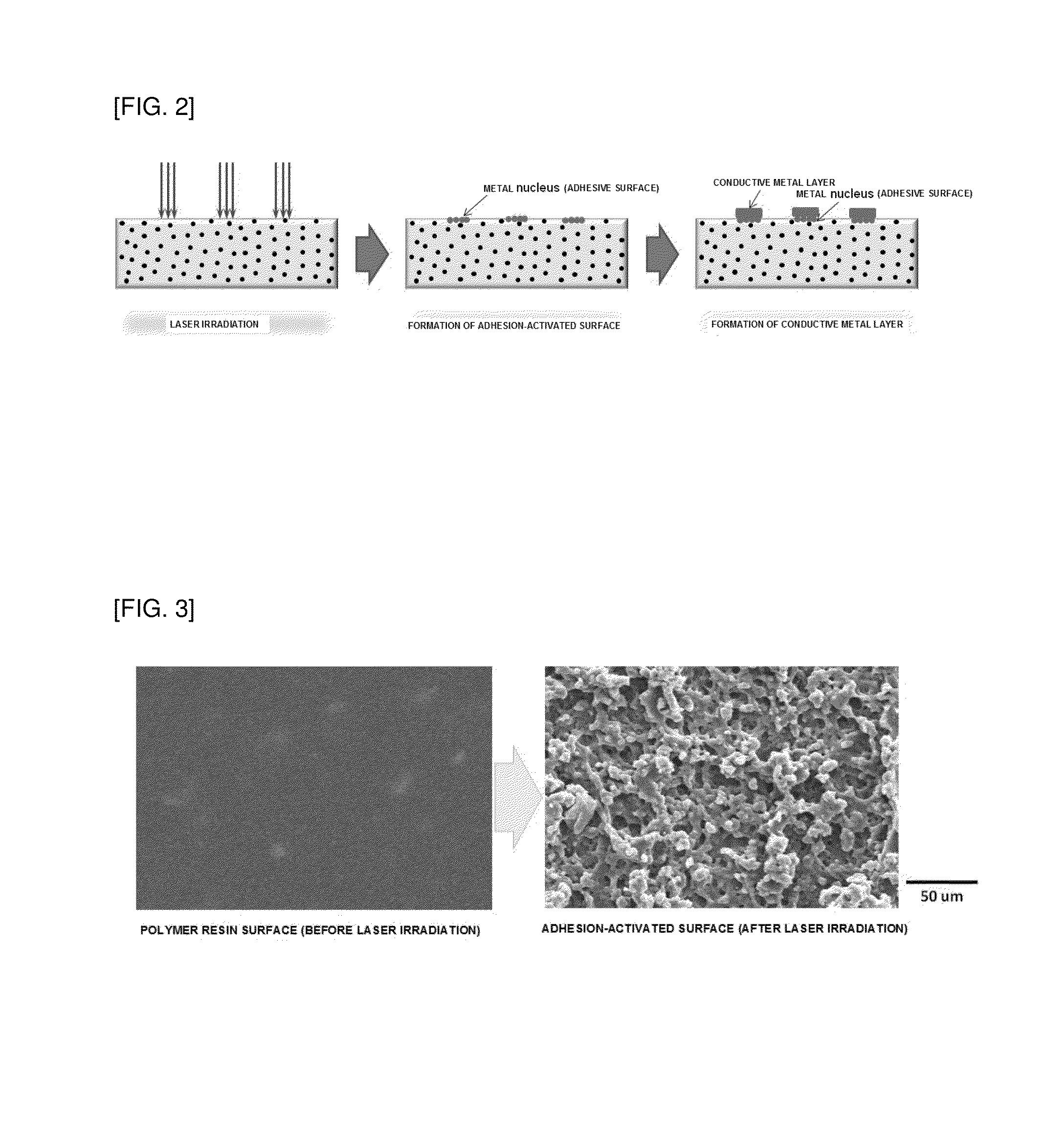COMPOSITION FOR FORMING CONDUCTIVE PATTERN AND RESIN STRUCTURE HAVING CONDUCTIVE PATTERN THEREON (As Amended)
- Summary
- Abstract
- Description
- Claims
- Application Information
AI Technical Summary
Benefits of technology
Problems solved by technology
Method used
Image
Examples
preparation example 1
Synthesis of Non-Conductive Metal Compound CuCrO2
[0087]Raw materials, CuO and Cr2O3 were uniformly mixed with each other at a molar ratio of 2:1 by ball milling for 6 hours. Thereafter, the mixture was calcined under conditions of atmospheric pressure and 1050° C. for 2 hours to synthesize powders having Chemical Formula of CuCrO2. After the synthesis, CuCrO2 powders having controlled particle size to be used in the following Examples were prepared by controlling milling time for comminution process. An electron micrograph and an X-ray diffraction pattern of the CuCrO2 powder are shown in FIGS. 4 and 5, respectively.
[0088]The electron microscope and X-ray diffraction analysis showed that the non-conductive metal compound has a flat-type crystal structure, and the layered three-dimensional structure (a R3m or P63 / mmc space group in crystal structure) as illustrated in FIG. 1.
examples 1 to 3
Formation of Conductive Pattern by Direct Laser Irradiation
[0089]A composition for forming a conductive pattern by electromagnetic wave irradiation was prepared by using a polycarbonate resin as a base resin, non-conductive metal compound particles (CuCrO2; average particle size: 0.5 μm) obtained by Preparation Example 1 as an LDS additive, together with additives for the process and stabilization.
[0090]As the additives, trialkyl phosphate as a commercialized flame retardant, a heat stabilizer (IR1076, PEP36), a UV stabilizer (UV329), a lubricant (EP184), and an impact modifier (S2001) were used.
[0091]As shown in Table 1 below, 79 to 84 wt % of the polycarbonate resin, and 3 to 5 wt % of the LDS additive of the Preparation Example 1 (CuCrO2; average particle size: 0.5 μm) were used, and 6 to 11 wt % of the flame retardant, 4 wt % of the impact modifier, and 1 wt % of other additives including the lubricant were added to be mixed to obtain the composition, which was extruded by an ex...
experimental example 1
Evaluation on Reflectivity of Resin Structure to Laser and Evaluation on Adhesion Strength of Conductive Pattern
[0102]First, in Examples 1 to 3 and Comparative Examples 1 and 2, reflectivity to the laser with a wavelength of 1064 nm in the resin substrate immediately before laser irradiation was measured using a UV-vis-NIR spectrometer. The measurement results are summarized in following Table 2.
[0103]Referring to Table 2 below, it was found that the substrates of Examples 1 to 3 showed relatively low reflectivity to the laser, indicating high absorption and sensitivity to the laser, whereas the substrate of Comparative Examples 1 and 2 showed high reflectivity, that is, low absorption and sensitivity to the laser. It was confirmed therefrom that formation of the metal nucleus and better conductive pattern is possible by using the compositions of Examples, as compared to the composition of Comparative Examples 1 and 2.
[0104]Then, after the conductive pattern was formed in Examples 1...
PUM
| Property | Measurement | Unit |
|---|---|---|
| Fraction | aaaaa | aaaaa |
| Fraction | aaaaa | aaaaa |
| Power | aaaaa | aaaaa |
Abstract
Description
Claims
Application Information
 Login to View More
Login to View More - R&D
- Intellectual Property
- Life Sciences
- Materials
- Tech Scout
- Unparalleled Data Quality
- Higher Quality Content
- 60% Fewer Hallucinations
Browse by: Latest US Patents, China's latest patents, Technical Efficacy Thesaurus, Application Domain, Technology Topic, Popular Technical Reports.
© 2025 PatSnap. All rights reserved.Legal|Privacy policy|Modern Slavery Act Transparency Statement|Sitemap|About US| Contact US: help@patsnap.com



